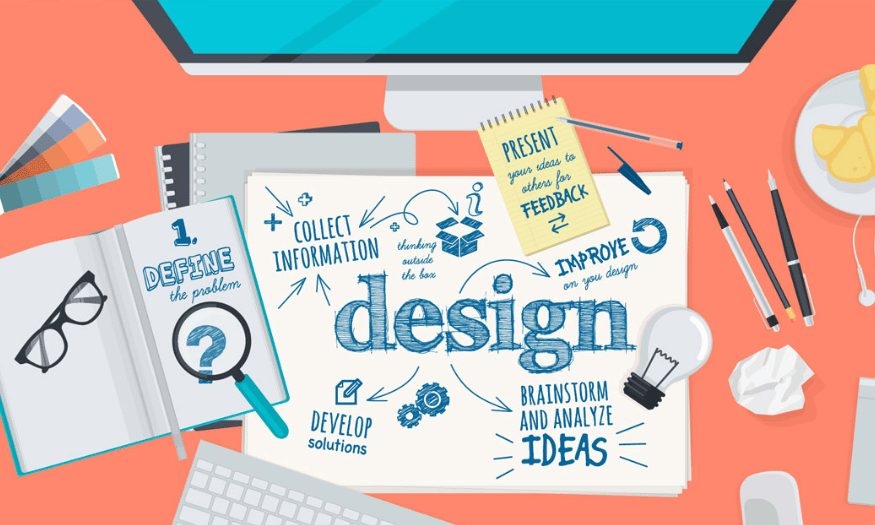Best Selling Products
Things You Need to Know Before Entering the 3D Design Industry
Nội dung
- 1. Overview of 3D design industry
- 2. Things to consider before entering the 3D industry
- 2.1. Determine why you want to learn 3D?
- 2.2. How much can you invest in the 3D industry?
- 2.3. 3D work is not only about creative flying?
- 2.4. Get familiar with Deadline
- 3. Benefits and career opportunities in the 3D industry
- 3.1. Diverse career opportunities
- 3.2. Advantages of the 3D industry
3D industry is not only a technology trend but also a creative art field, where ideas are transformed into vivid reality. Every individual who enters this path will experience challenges but at the same time have the opportunity to assert themselves and create unique products.

3D design has made great strides, not only changing the way we approach art and design but also opening up new directions in business and technology. Today, 3D technology is widely applied in film production, games, advertising, architecture and even in the manufacturing industry. With the development of technologies such as VR (virtual reality), AR (augmented reality) and metaverse, the 3D industry has become more diverse and rich than ever.
But before deciding to pursue this industry, each individual needs to clearly understand the opportunities along with the challenges, thereby making a decision that is suitable for their career orientation. The article below not only provides basic knowledge about the 3D industry but also helps you evaluate the factors to consider before entering this potential creative path.
1. Overview of 3D design industry
3D design began to appear in the 1960s with the early technologies in the field of computer graphics. Initially, the creation of 3D images was very simple and mainly for research purposes. However, with the explosion of digital technology and high-configuration computers from the late 1980s, specialized software such as Maya, 3ds Max, and Blender were born, making the production of 3D images and effects more complex and sophisticated.
Over the years, 3D design has continued to embrace and apply new technological advances, from combining with digital techniques in filmmaking to applications in game development and product design. Technological breakthroughs have opened doors for creators, allowing them to express their ideas in the most intuitive and vivid way.
.png)
3D design is a field that involves the creation of three-dimensional images, models and visual effects using digital technology. From animating cartoon characters, building architectural models to creating special effects in movies, 3D has played an important role in many creative industries.
Modeling: The process of creating 3D objects from basic geometry. This is the foundation for all 3D work, from characters to objects in a scene.
Animation: Turn static models into living characters through creating natural and expressive movement.
Visual Effects: Apply special techniques to create unique effects, from storms, explosions to surreal movements in scenes.
Rendering: The process of converting 3D models and effects into high quality final images.
(1).png)
In addition, the 3D industry also expands into ancillary fields such as 3D printing, virtual reality (VR) and augmented reality (AR), each of which brings its own unique opportunities and challenges.
2. Things to consider before entering the 3D industry
2.1. Determine why you want to learn 3D?
Before studying 3D, you should clearly identify what attracts you to this industry? Some people like 3D because they often play games, watch movies and like the vivid and beautiful images in these products. Many people choose this industry because they think that working in 3D allows them to be creative. Some people are interested because they see that they can learn this profession and earn an income. Whatever the reason, you should clearly identify it before entering this industry.
.png)
Why is this necessary? Clearly defining the reason and learning goals will help you be more steadfast in the face of difficulties when pursuing a career. Every career will have challenges, and 3D is no exception. Many people choose to study because of their initial interests, but then become disillusioned and confused because of the difficulties they face. The 3D industry is very open, but it will not be easy to learn if you do not spend time and effort practicing. The industry requires specialized knowledge of aesthetics, design, requires technical thinking and sensitivity to technology. Besides, the industry is very broad, some people who study 3D also work in somewhat dry fields such as construction, engineering, etc.
So, be very clear about why you want to learn 3D, and what goals you want to achieve. Once you are sure about that, you can be steadfast and determined to pursue and develop your career.
2.2. How much can you invest in the 3D industry?
Learning and doing 3D professionally can be quite expensive. Jobs in this industry require investing in a good computer configuration to learn and work. A typical example is the Rendering stage on software to produce the final product. A good machine will perform this stage in a short time, heavy files can take 1 hour. A machine that is not strong enough can extend the time to several hours. And that is just a small stage in the 3D process. Imagine if you do not invest in the right machine, how long can the whole process last?
.png)
Besides computers, 3D artists also need to invest in learning software. Most of the most popular and quality 3D software require payment. You can still refer to free software like Blender, but to pursue this career long-term, you still need to know at least 2-3 different software. Not all software can be free.
From the above two factors, you should think carefully about the cost of studying and pursuing a career in 3D. That does not mean that the 3D industry is “selective”, only for those with conditions. But the above are the minimum costs you need to invest to BE ABLE to do the job. From these initial investments, you can gradually create impressive products, complete potential creative projects and bring in a good source of income.
2.3. 3D work is not only about creative flying?
It is true that the 3D industry allows you to be creative, but that is not all. Work in the industry requires technical skills, demonstrated through a sensitivity to technology such as software and machinery. Not to mention, you also need to be creative according to a pre-existing request from the customer, project management. Those are the characteristics that always exist in the 3D industry. If you are an emotional person, who values being creative, are you willing to compromise with the above industry characteristics? If you want to stick with the 3D industry for a long time, be open and ready to adapt to those characteristics!
.png)
2.4. Get familiar with Deadline
The 3D industry in particular, and creativity in general, can give you flexibility in terms of time. You are not required to follow a rigid office schedule like other jobs. You can work according to your personal schedule, the way you arrange it. However, you will need to ensure that you complete the given Deadline. Sometimes Deadlines will be very "relaxing" for professionals. But there are also many times when they have to face urgent Deadlines, working hard because of the project's requirements. The pressure of Deadlines and time is always something that haunts people in the industry. If you are okay with working day and night, or sometimes the hours are not too fixed, try the 3D industry!
3. Benefits and career opportunities in the 3D industry
One of the reasons why the 3D industry is so appealing to many people is the diverse benefits and career opportunities it offers. Here are some highlights:
(1).png)
3.1. Diverse career opportunities
The 3D industry opens up many job opportunities in different fields:
3D Artist: Specializes in creating 3D images and models for movies, games and advertising.
Animator: Responsible for bringing static models to life through animation techniques.
Modeler: Focuses on building detailed models, from characters to objects in scenes.
VFX Artist: Specializes in creating unique visual effects for action movies, science fiction movies and commercials.
Technical Director: Takes on the role of connecting art and technology, ensuring high quality 3D products.
.png)
Each position has different requirements and professional skills, allowing you to choose a path that suits your passion and abilities.
3.2. Advantages of the 3D industry
Not only does the 3D industry offer diverse career opportunities, it also offers many outstanding benefits:
Unlimited creativity: When working with 3D technology, you can turn seemingly impossible ideas into vivid, unique and impressive products.
Attractive income: Good 3D experts often have competitive salaries and income, especially when they have experience and the ability to handle high-quality projects.
.png)
Global development: With the integration of digital technologies, you have the opportunity to work on international projects, expand your network of relationships and experience cross-cultural relationships.
Flexibility in work: Many 3D artists today work freelance or remotely, allowing them to manage their own time and workspace.
Throughout the article, we have explored the important aspects of the 3D industry. Like a journey, pursuing a career in 3D is not always easy, but if you have passion and are well-prepared, it will open up unlimited career opportunities and experiences. If you are considering entering the 3D industry, ask yourself: “Am I ready for the challenges and opportunities ahead?” Start by learning, self-studying and building a professional portfolio. At the same time, don’t forget to connect with the community and constantly improve yourself through each real project.












































